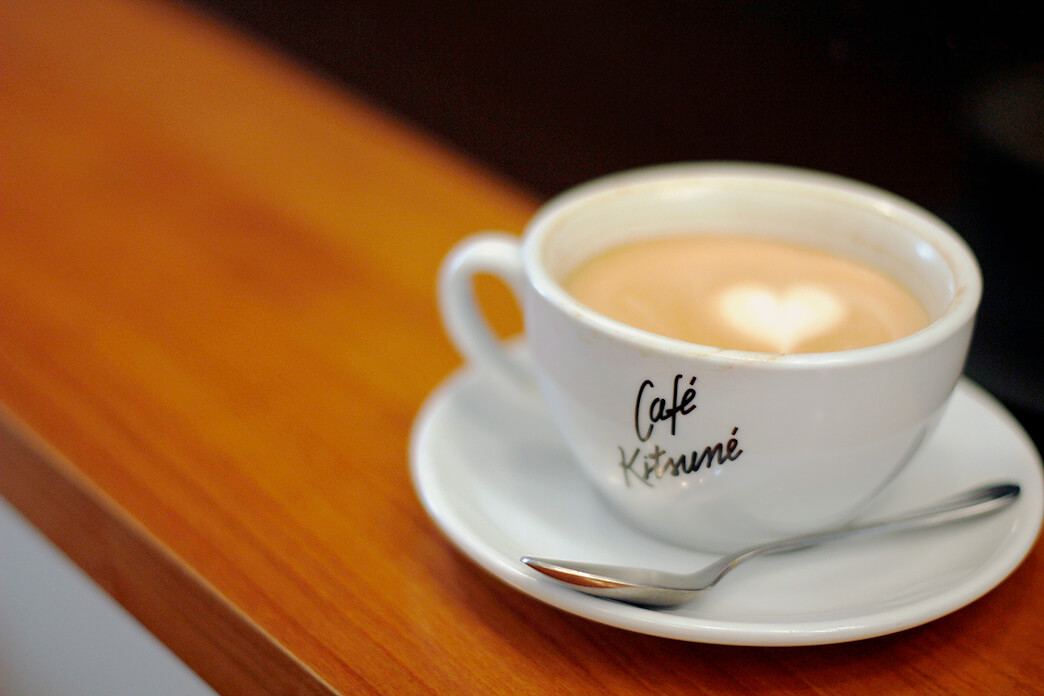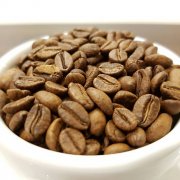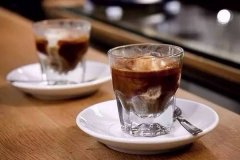How does Starbucks decaffeinated coffee taste? Starbucks decaffeinated coffee method

Professional coffee knowledge exchange more coffee bean information please follow the coffee workshop (Wechat official account cafe_style)
The origin and development of decaf: why are all Swiss decaf sold?
Once upon a time, from being able to drink four or five cups of noodles a day without changing color, I was prone to palpitations when I had more than one cup. I didn't find a special reason for doing Holter EKG. After often smelling caffeine and salivating, I began to look for information about decaffeinated (Decaf) coffee.
According to EU standards, decaffeinated coffee is defined as having no more than 0.1% caffeine by weight of raw beans. The Starbucks standard (also the general international standard) is removed to less than 3% of the original content, which can only be called decaffeinated coffee, not decaffeinated coffee.
There are many ways to remove caffeine, which can be divided into:
1. Direct / indirect contact method: at present, the most commonly used method is to dissolve caffeine with chemical solvents such as dichloromethane (methylene chlo- ride) and ethyl acetate (ethyl acetate, EA). Although there are standards for extremely low residues, many people still have doubts that dichloromethane is a possible carcinogen and ethyl acetate can cause skin problems. Perhaps how much caffeine remains in decaffeinated coffee will not be a concern, but organic solvents will be. See here is full of waiting to buy decaf peers may be scattered in a rush?
Looking back at the hot topic of epidemic disease in the 1980s, that is, the relationship between coffee drinking and pancreatic cancer, the correlation is still inconclusive. At that time, some scholars thought that it was decaf, which may be caused by the solvent used in it. This is an article at the presidential and vice presidential level, because it was Professor Lin Ruixiong who first published it.
(Lin, R. S., and Kessler, I. I. A multifacto- rial model for pancreatic cancer in men: epi- demiologic evidence. JAMA, 245Plus 147152, 1981.) Perhaps it is really the use of caffeine in the past 30's and 60's, which is definitely caused by the harmful substance "trichloroethylene". But more detailed studies since then do not seem to further confirm the correlation. In the past, studies have found that people who drink low caffeine have higher bad cholesterol, while the good ones remain the same, but there is no final conclusion.
two。 Swiss washing method: Swiss Water ®, which is of special interest. In short, soak the raw beans in water, filter out the caffeine with activated carbon, and then soak the beans with the filtered oversaturated water.
3. Supercritical carbon dioxide (CO2) treatment: coffee beans expand after absorbing water, caffeine molecules are loosened in the bean body, add carbon dioxide and give more than 100atmospheric pressure (Atm) in the water, which is to create an environment of high pressure and low temperature soda water. When caffeine is captured by carbon dioxide, it begins to move. Carbon dioxide is highly selective and does not capture carbohydrates and proteins in coffee beans, which are the main components of the stroke taste and smell of coffee beans. In fact, this method should be familiar to everyone, because it is also used in Yimei wash-free rice sold in supermarkets in Taiwan!
In addition, less people mention the use of triglyceride method to remove, do not know and caffeine can reduce cardiovascular disease has any relationship. What is interesting is that the caffeine isolated by various methods can be used as a pharmaceutical company and other uses (Puna pain fortified tablets and Coca-Cola, I think this is how it comes from!).
Many cafes are springing up, but when asked about decaffeinated products, almost nine times out of ten they will say, "Sorry!" We don't have any. "for example, another large-scale store in Tangcheng Park, where the doctors' Association is located, cannot be found. Even Starbucks' decaf beans are often out of stock and need to be ordered. The pen first bought its homely low bean (Decaf house blend), and later bought the "auspicious dragon" (actually komodo, Komodo dragon, which is mainly Indonesian beans). In general, we order Decaf espres- so in the store, and we don't sell whole bags of beans in Taiwan. If in the United States, there are Sumatra (there is a Sumatran tiger logo) and Verona or instant solution and so on.
After carefully reading the packaging of goods bought in Taiwan, we can see that they use EA in chemical decaffeination, while both Japan and Hong Kong sell beans prepared by CO2 or Swiss washing. In this way, it is time to protest to Taiwan's Unified Starbucks.
The biggest point is, how does Decaf taste? Of course, very special beans such as civet coffee can not be used to make De- caf, that is abusive nature, so the comparable benchmark is really limited. Personally, compared with ordinary coffee beans, because after treatment, the fragrance is indeed easy to evaporate, if it is slightly sealed and oxidized, thus reducing sweetness and bitterness, so that decaffeinated beans can be reimbursed for a little more than a week from full flavor to dull and tasteless.
If it is the easiest to get, that is, in the Starbucks store, coffee connoisseurs will probably feel that it is a weak version of Yangchun, which is a little weaker in aroma and taste than the original, and it is really impossible to have both fish and bear paws. But not as disappointing as the coffee grounds in the ashtray.
In fact, when grinding beans, it is also very fragrant, and you can even cook it yourself to make it thicker. In particular, you can have three or four cups without heart palpitations, and you won't be unable to sleep when you drink them before going to bed. It's even more reasonable for those loyal to coffee to order a cup of decaf at night, which is really good!
The author has also tried Tiamo ground Lavazza decaf coffee. The label only says natural extraction to extract caffeine from raw beans. It does not specify how to remove caffeine, but natural extraction is usually chemical solvent. Compared with Starbucks, the charred taste is lighter and the aroma is sweeter, but it is not very strong. Nestl é instant decaffeinated coffee is imported from Japan, and its flavor is similar to its original instant coffee.
In addition, the beans that have been tried in roaster Coffee (there are also several branches in the United States, which are owned by Taiwanese, and its civet coffee is not wrong) are also less fragrant than before. The coffee makers in the shop think that the coffee grounds of their Decaf still smell a little chemically, but I can't smell it.
The most recommended is a coffee shop in Taichung: Osher. Its Ethiopian sunny Sidamo decaf (CO2 treatment), from the Dara district of Sidamo province, is a village-neighbourhood cooperative of more than a hundred small farmers, with an average coffee plantation of about 0.5 hectare per household, about 2000 meters above sea level. Its fruity aroma is well preserved, with spice sweetness and apricot fruit flavor, mellow flavor, almost as good as the general manor coffee.
Another Mojocoffee is also in Taichung, using Swiss water-treated beans, which are well baked and very good.
It is a great blessing that new varieties of low / decaffeinated coffee trees were discovered several years ago.
But what is even more amazing is that Professor Hiroshi Sano's team at the Genome Research Center of Nara University of Science and Technology interrupted the production of caffeine by suppressing the second transmethylase (theo- bromine synthase, caffeine synthase) gene with a "RNA interferon" (RNAi). Results after the experimental coffee tree grew up for one year, the caffeine content in the leaves decreased by 50% to 70%! (Nature 423,823,19 June 2003)
I believe that in a few years, we will have to worry about choosing genetically modified or non-genetically modified coffee beans!
.
Important Notice :
前街咖啡 FrontStreet Coffee has moved to new addredd:
FrontStreet Coffee Address: 315,Donghua East Road,GuangZhou
Tel:020 38364473
- Prev

Natural decaf beans-pointed bourbon story what other varieties of decaf are there?
Professional coffee knowledge exchange more coffee bean information please follow the origin and development of decaf coffee in coffee workshop (Wechat official account cafe_style): why are all Swiss water treatment decaf coffee sold? Pointed Bourbon / Wild Natural semi-decaf Bourbon Pointu Coffee Bean King: pointed Bourbon Bourbon Pointu, one of the rare boutique coffee beans in the world.
- Next

How does Starbucks decaf coffee taste? Decaf coffee is decaf.
Professional coffee knowledge exchange More coffee bean information Please pay attention to coffee workshop (Weixin Official Accounts cafe_style) The origin and development of decaf coffee: Why sell Swiss water treatment decaf coffee? Decaffeinated Starbucks Homemade Coffee Beans are a blend of the finest Latin American coffee beans using natural decaffeinated processing to create a stone fruit and cocoa-like taste body.
Related
- Beginners will see the "Coffee pull flower" guide!
- What is the difference between ice blog purified milk and ordinary milk coffee?
- Why is the Philippines the largest producer of crops in Liberia?
- For coffee extraction, should the fine powder be retained?
- How does extracted espresso fill pressed powder? How much strength does it take to press the powder?
- How to make jasmine cold extract coffee? Is the jasmine + latte good?
- Will this little toy really make the coffee taste better? How does Lily Drip affect coffee extraction?
- Will the action of slapping the filter cup also affect coffee extraction?
- What's the difference between powder-to-water ratio and powder-to-liquid ratio?
- What is the Ethiopian local species? What does it have to do with Heirloom native species?

